- Getting around Lijiang. Dont stay in the Old Towns more than 2 days, there is nothing to do. KRISS Oct 9, 2013 05:46
- 2013 Beijing Temple Fair BENNYLAU Feb 26, 2013 03:29
- Malaysian traveling from KUL - LAX vis Shanghai PVG ZATI_DY Jan 3, 2013 20:15
Photographs of Shanghai Part Two
- Views: 4657
- |Vote: 0 0
- |Add to Favorites
- |Recommend to Friends
The Dragon Sleeps
Shanghai is a tangle of overpasses: a city of that magnitude needs to find efficient ways to solve the extraordinary traffic problem, and Shanghai’s rather elegant solution is to lift a second tier of roadway above the ground. Everywhere you go in Shanghai, the ground level roads are over-shadowed by expressways above: drivers pass by the mid-level windows of apartment blocks and glance inside in hope of catching any of Shanghai’s legendary beauties changing clothes.
The roads are supported by broad concrete pillars, each of which needs to carry the burden of Shanghai’s millions of vehicles roaring above every day. One of these pillars, curiously enough, is different from the others. Passengers might pass this pillar in an assuming central Shanghai location and wonder why it, amongst all the others, is decorated with ornate dragon designs.
There is a story behind it – it was told to me that when these roadways were being constructed, huge machines were brought in to pound depressions into the ground in which to position the pillars. However, in this particular location, no matter how much force was applied to the machinery, not a dent could be made in the earth, and there seemed to be no logical reason why not. The advice of many geological experts was sought, and not one could offer any explanation.
Finally, the project manager sought the advice of a soothsayer – according to the story, he wasn’t a particularly superstitious man, but he was exasperated at this continued hold-up to expressway construction.
The soothsayer told him that the reason why he couldn’t put that one pillar into the ground was that directly beneath lay a sleeping dragon. He was advised that if he shifted the drilling site a few metres away from the spot, he’d have no difficulty at all. However, he needed to respect the fact that something of this nature was a secret of the heavens and not for the knowledge of the people of the Earth: this secret was not to be shared with others.
The manager of construction did as he was told and shifted the drilling site, a move which resulted in immediate success and construction could recommence. Much delighted, he decided to tell his colleagues the story about the dragon and what he’d been told had caused the problem.
After revealing this information, he died in an accident the very next day. His shocked comrades decided to commemorate him, and the sleeping dragon, with the dragon designs on the pillar. No other plaque remains: in fact, the Shanghai municipal government is reported to be embarrassed by the incident and prefers discretion lest they be seen to encourage superstition. But now, drivers around Shanghai can see the beautiful dragon pillar, and remember the legend of the dragon breathing in his sleep beneath the traffic.
Cheng Huang Miao
It used to be that every town in China erected a temple for the worship and satisfaction of the gods of the town. Few of these survive around the country, but it is perhaps significant that Shanghai’s is now become a magnificent labyrinth of merchants. The old buildings are panelled in white like old Tudor homes, but in every other respect they stand magnificent in gorgeous, traditional Chinese style, the layout something like a palace with the exception of a multitude of salespeople wandering about the alleyways approaching foreigners with large cards displaying photos of fake watches saying “ruo-lek-si?”
I was treated to breakfast there, having asked to sample some genuine Shanghai snacks. At Nanxiang Steamed Dumpling, I was looking forward to trying out Shanghai’s famous Xiaolong Baozi, baskets of little steamed dumplings made according to local techniques. Another kind is a cross between a drink and a dumpling – the Tang Bao is a large, thick-skinned dumpling with a straw slipped into the top – the meat soup is sucked out and the skin discarded. Unfortunately, this was one occasion where my vegetarianism precluded my involvement: no vegetable versions were available and I was relegated to eating a cold noodle with mianjin – a chewy substance made from a kind of soaked boiled bread.
Chenghuang Temple is still adjoined to the market quarters, but I felt it rather more in keeping with the nature of Shanghai to just wander through the shopping area and enjoy the ruckus of tourists and earnest merchants. Gold and jade ornaments were on sale alongside plastic fruit and model cars; fans and silks hung from stalls next to others selling stuffed toys.
Xin Tian Di
Not far from Chenghuang Miao is one of Shanghai’s most attractive modern districts, the smart Xin Tian Di – “New Heaven and Earth”. A Shanghai native, who’d been driving me through the city, told me that the compound was an attempt to preserve some of the original character of Shanghai and incorporate it into stylish modern design – a trick that seems to have worked. From a distance, the complex looks like a collection of traditional homes made new – my friend related that he lived in homes exactly like these as a child. Get within and you’ll find yourself amidst the trendiest of bars and cafes, where foreigners by the plenty are sitting relaxing with mixed drinks and smoking in the warm outdoors with lightly dressed local girlfriends.
Xin Tian Di has become the place to be seen in Shanghai, an impressive claim in a city where many fashionable locations compete for this reputation. Here you’ll find international cuisine and live music played by world-class musicians; here you’ll find an excuse to mellow out as well as a convenient place to go wild. Even if you’re not in the mood for an expensive coffee or 600ml bottle of beer, just strolling around the charming architecture in the daytime is fascinating enough. Xin Tian Di offers the mood of an old Shanghai of long ago that is distinct from its colonial history, and at the same time orientates tourists well within the present day.
Night on the Bund
The Bund is the most famous scene of Shanghai – that old line of European banks filed along the river front, and across from them a space-age collection of odd futuristic towers that look not unlike the props of a B-grade science fiction movie, reaching starwards on the opposite shore. I’ve written before that the impressive office towers of Pudong district are unusual in that despite their striking show of wealth and imaginative architecture, they’re not very busy with commercial tenants. I asked my Shanghainese friend if this was still true.
“These things were rushed through”, he told me. “There are more and more businesses opening up there, but these buildings are more for show than for any practical purpose. The Oriental Pearl Tower’s greatest success is the ease with which it can be seen – it’s positioned right at the focal point of all the streets on the opposite side, so that no matter where you are in central Shanghai you’re still likely to spot it.”
Walking along the river’s edge in the evening is beautiful, sure, but it’s also an annoyance – half of Shanghai is there trying to sell jewellery with flashing lights, and the crowd is so thick it’s very difficult to get right to the edge of the water to take a photograph. I’d tried and failed to remember to bring a tripod to take a good picture of Pudong lit up at night – instead I tried to balance my camera on the rails with everyone pushing behind me to avoid camera shake.
We walked back beneath the colonial facades and I asked why Shanghainese had kept these old things which are the remnants of a colony that degraded and exploited the Chinese people. The old foreign inhabitants of Shanghai were nothing less than invaders who saw themselves as superior to local Shanghainese and treated them with according disrespect. Why not knock them down.
“Despite it all,” my friend said, “we have to admit that while everything we built eventually falls down into ruins, these things are still standing.”
The Dolar Restaurant
The appeal of Shanghai is often that whilst the city is in most senses an international destination with very little that is stereotypically Chinese or anything like what you might find in the rest of the country, there are places where genuine attempts at fusion have been made. New buildings take imperatives from Chinese art, new sculptures preserve ancient Chinese themes and the migrant workers parade themselves as living proof that Shanghai is still spiritually situated within the folds of China’s cloak.
Deliciously, this fusion is occasionally represented in Shanghai’s cuisine, and this was indeed tastily in evidence at the Dolar Shop, where I enjoyed a meal that presents itself as the juxtaposition of fashion and hotpot. Hotpot cuisine is a permanent fixture on the Chinese tabletop nationwide, being generally speaking the boiling of portions of meat and veges in flavoursome soups on your own table, which you can then pluck out with your chopsticks and dip them into sauce before it meets with tongue at last.
Dolar Shop, its walls flushed in Imperial crimsons, presents a sleek series of tables and benches where diners can perch themselves and partake in the fusion fare. Having selected sauces and condiments from well-stocked flavour bars, the hotpot soup is delivered before you as well as plates of the ingredients that can be selected from imaginative menus.
With an overwhelming cacophony of glass, sublit tables, red colour everywhere and superb hotpot, this chic restaurant is one of Shanghai’s must-visit restaurants, with four locations all over the city. If you’re in town and want the trendiest hotpot around – try here.
DOLAR SHOP:
3rd floor, 363 Tianyaoqiao Road – 64263357
20th floor, Xinmei East China Hotel, Cnr Tianmuxi and Meiyuan Roads – 63176999
20th-21st floor, Bailemen Hotel, Nanjing Xi Road (near Huashan Road) – 62497188
9th floor, 601 Zhangyang Road (near Laoshan Xi Road) - 58361886



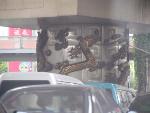
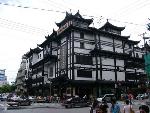
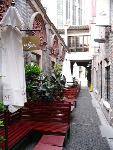
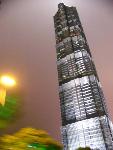
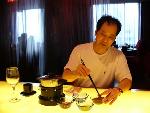
 Copyright © 1998-2025 All rights reserved.
Copyright © 1998-2025 All rights reserved.